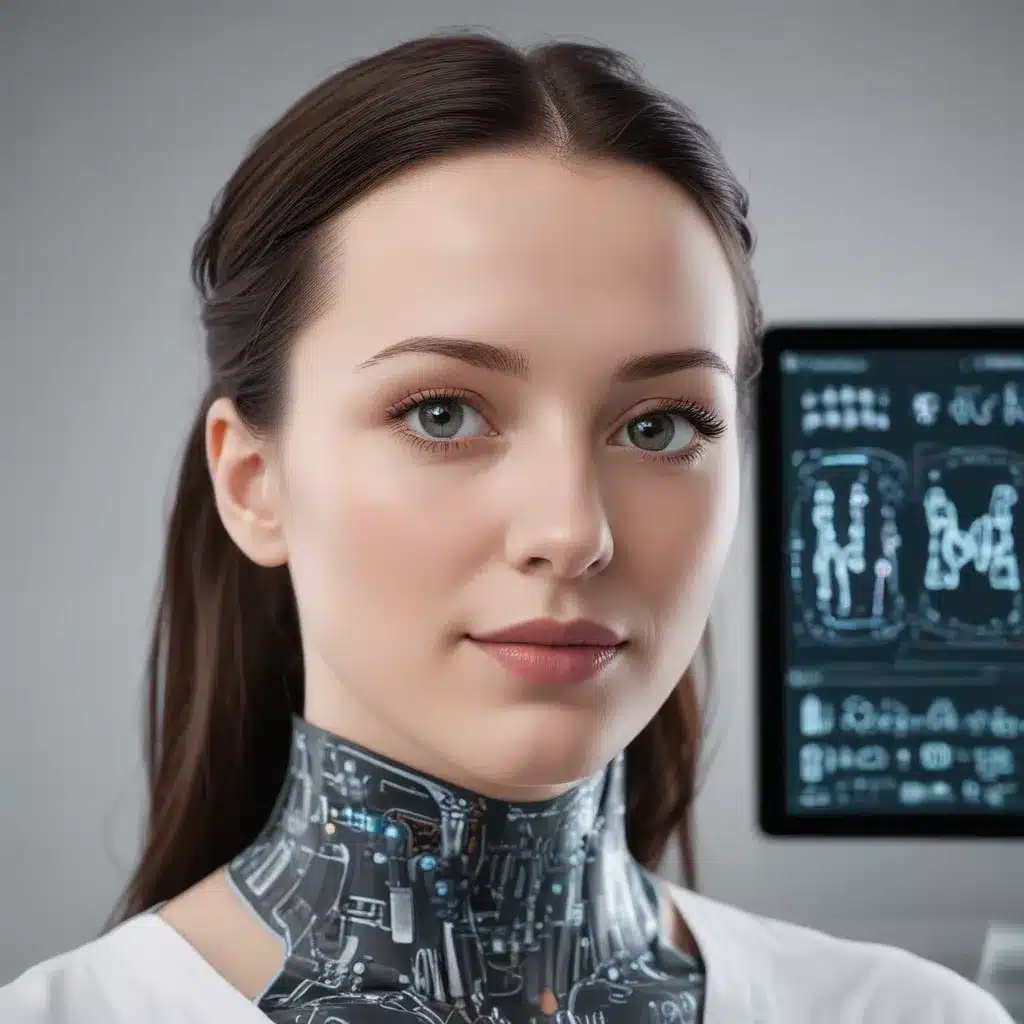
The Perils of Manual Diagnostics
As a healthcare professional, I’ve witnessed firsthand the limitations of traditional diagnostic methods. Manually examining patients, analyzing lab results, and relying on subjective observations can be time-consuming, error-prone, and frustrating for both patients and providers. Too often, I’ve seen cases where the initial diagnosis was incorrect, leading to unnecessary treatments, delayed care, and suboptimal outcomes.
The human brain can only process so much information at once, and even the most experienced clinicians can overlook crucial details or make biased judgments. Diagnostic guesswork is simply not a reliable way to ensure accurate, timely, and personalized healthcare. Patients deserve better, and thanks to advancements in Artificial Intelligence (AI), we can now offer them a more precise, efficient, and empowering diagnostic experience.
The Rise of AI-Powered Diagnostics
In recent years, the healthcare industry has seen a surge in the adoption of AI-powered diagnostic tools. These cutting-edge technologies leverage the power of machine learning, natural language processing, and computer vision to analyze vast amounts of data, identify patterns, and make highly accurate predictions.
Unlike traditional diagnostic methods, AI-powered systems can process a multitude of inputs – from medical images and lab reports to patient histories and lifestyle factors – and use this information to generate a comprehensive, personalized assessment. These systems are not susceptible to human biases or lapses in attention, and they can deliver results in a fraction of the time it would take a human expert.
But the benefits of AI diagnostics go beyond speed and accuracy. These technologies also have the potential to democratize healthcare, making high-quality diagnostic services more accessible to underserved communities and individuals who may have previously faced barriers to accessing specialized care.
Leveraging AI for Personalized Healthcare
One of the most exciting aspects of AI-powered diagnostics is their ability to tailor the care experience to each individual patient. By analyzing a vast array of data points, these systems can identify unique risk factors, pinpoint the root causes of a patient’s condition, and recommend the most appropriate treatment plan.
For example, an AI-powered system might detect subtle changes in a patient’s biomarkers that could indicate the early stages of a chronic disease. Armed with this information, the healthcare provider can take proactive steps to address the issue, potentially preventing the condition from worsening and improving the patient’s long-term prognosis.
Similarly, AI-powered diagnostics can help identify the most effective medications or therapies for a given patient, taking into account their genetic profile, medical history, and individual response to different treatment options. This level of personalization not only improves clinical outcomes but also enhances the patient’s overall experience, as they feel empowered and actively involved in their care.
Overcoming Barriers to Adoption
Despite the clear benefits of AI-powered diagnostics, the widespread adoption of these technologies has faced some challenges. One of the primary concerns is the issue of trust – both from patients and healthcare providers – in the reliability and transparency of these AI systems.
To address this, it’s crucial that AI-powered diagnostic tools undergo rigorous testing and validation, with their decision-making processes being thoroughly explained and documented. Clinicians must also receive comprehensive training on how to interpret and act upon the insights generated by these technologies, ensuring that they can seamlessly integrate AI into their existing workflows.
Another barrier to adoption is the perceived threat that AI poses to the role of human healthcare professionals. However, the reality is that these technologies are designed to complement and empower clinicians, not replace them. By automating routine tasks and providing data-driven insights, AI-powered diagnostics can free up healthcare providers to focus on higher-level decision-making, patient-centric care, and continuous professional development.
The Future of Diagnostics: A Symbiotic Relationship
As AI-powered diagnostic tools continue to evolve and become more widely adopted, I envision a future where the relationship between humans and machines in healthcare will be truly symbiotic. Clinicians will leverage the speed, precision, and analytical capabilities of AI to enhance their own expertise, while AI systems will benefit from the clinical judgment, empathy, and holistic understanding that only human healthcare providers can offer.
Together, we will create a healthcare ecosystem that is more efficient, personalized, and responsive to the unique needs of each individual patient. By embracing the power of AI, we can say goodbye to the guesswork that has long plagued the diagnostic process and instead usher in a new era of precision, data-driven healthcare.
Conclusion: Embracing the AI Revolution in Diagnostics
The future of healthcare is undoubtedly AI-powered, and the adoption of these transformative technologies in the diagnostic arena is a critical step towards delivering better outcomes for patients. By leveraging the power of machine learning, natural language processing, and computer vision, we can overcome the limitations of traditional diagnostic methods and provide a more accurate, efficient, and personalized care experience.
As we move forward, it will be essential for healthcare providers, policymakers, and the public to work together to address the challenges and concerns surrounding the implementation of AI-powered diagnostics. But with a collaborative, transparent, and patient-centric approach, I am confident that we can harness the full potential of this revolutionary technology and usher in a new era of precision healthcare.












